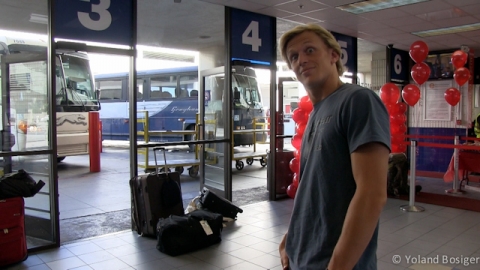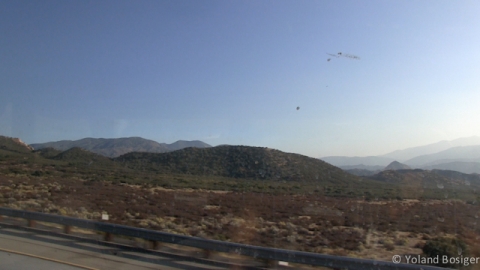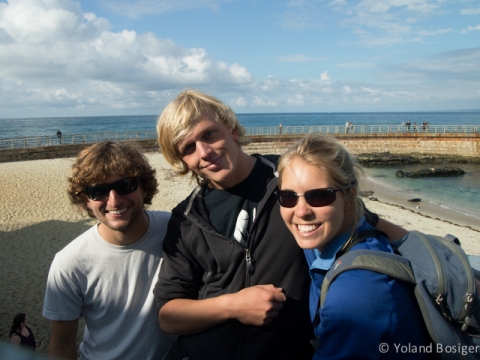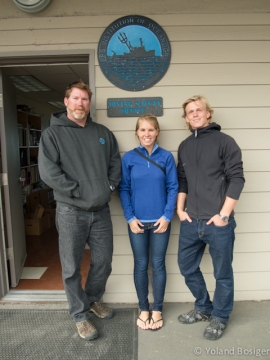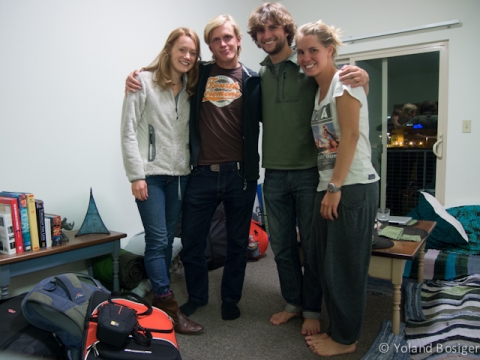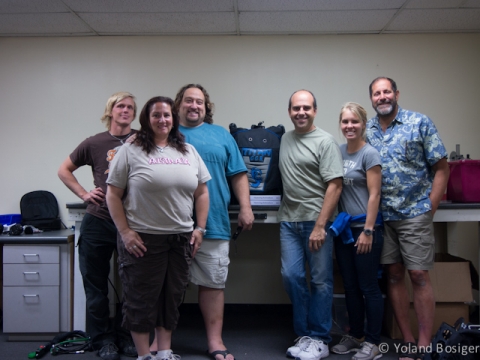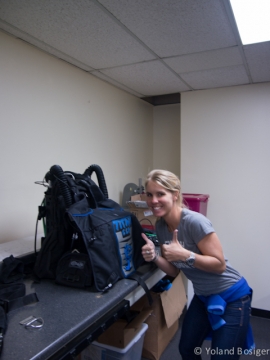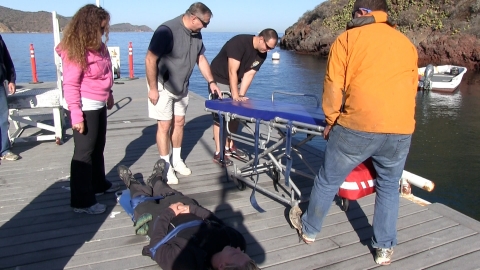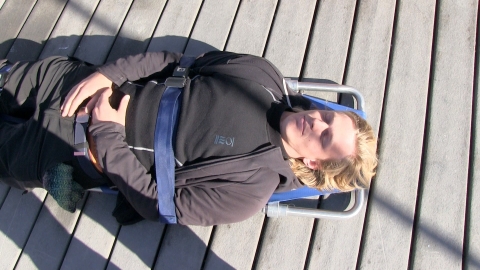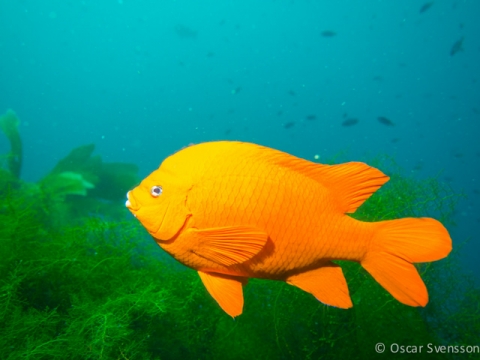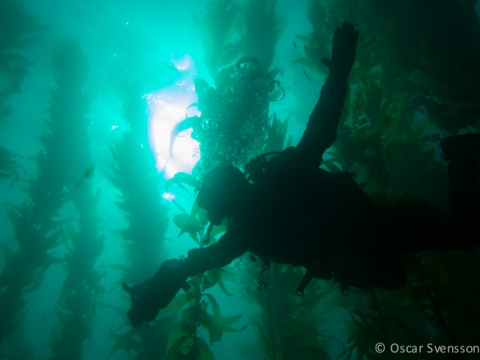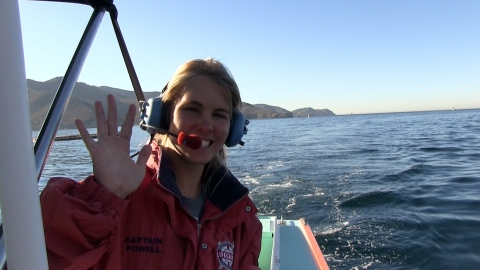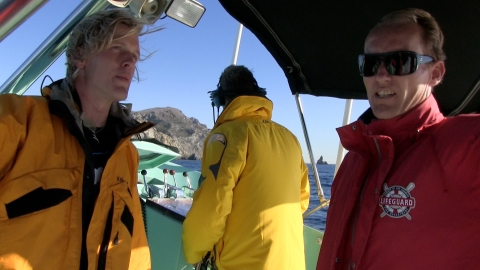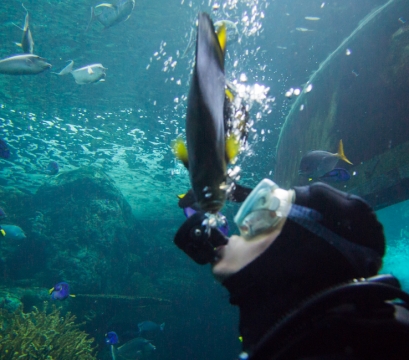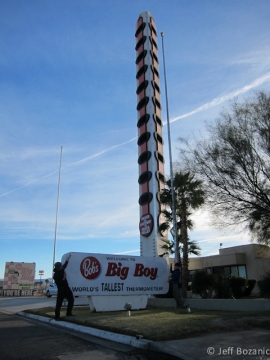Oscar and I reunited in the USA in November and started our US tour by visiting past American scholar Josh Stewart and his girlfriend Madeline in San Diego. The trip began with an 8 hour bus from Las Vegas to San Diego after we decided against hiring a car (a good plan on our behalf considering that we had both never been exposed to such outrageous traffic). Unfortunately, and despite the reassuring web page there was no internet or power plugs on the bus (ahh lies and treachery) and so we were forced to take a break and enjoy the dramatic desert scenes.
We met Josh at the station and then spent the next day checking out San Diego and exploring the diverse intertidal zone of La Jolla beach. Thanks to our Waterproof and Fourth Element gear we were able to play with the sea lions for hours.
SCRIPPS Institute of Oceanography is one most respected centers for ocean and earth science research, education and public service in the world and so we were stoked to visit. We began our tour by learning about the SCRIPPS diving program with diving safety officer, Christian McDonald. Christian gave us the rundown on the colourful history of the SCRIPPS Scientific Diving program and helped us to get our heads around the diving requirements. Turns out that SCRIPPS is one of the oldest scientific diving programs in the US, set up before Scuba diving was readily available. In fact three individuals that trained at SCRIPPS in 1953 later developed the oldest instructor program in the US, the Los Angeles Underwater Instructor Program.
At lunch we met with Associate Professor Stuart Sandin, a quantitative ecologist with specific interests in population and community ecology and particularly how ecology can inform marine management. Stuart recently conducted a trip using rebreathers in remote Palmyra atoll and it was interesting to learn more about how SCRIPPS is integrating this technology into its marine research programs. We then went our separate ways with Oscar meeting some biotechnology gurus and me, some students from the Small Scale and Artisanal Fisheries Network (SAFRN). This body incorporates a broad range of academic disciplines from law and international relations to social science and marine biology, SAFRN’s goal is to develop a set of broadly applicable methods to study small-scale artisanal fisheries all around the world.
To end a busy day we met with Christy Pattengill-Semmens, Director of Science at Reef. Kristy told us all about the Grouper Moon Project and how they have been involved in developing protocol for the numbers and activity of Nassau Grouper (Epinephelus striatus) at Little Cayman. For more information about this project see the website – http://www.reef.org/groupermoonproject and a video made by Josh Stewart – https://vimeo.com/24057281.
We fairwelled Josh and Mads after a fantastic stay and were then picked up my rebreather extraordinaire, Jeff Bozanic. Jeff introduced us to the Tomar Gross, Dan Aranda and Randy Klein Gross from Titan Dive Gear, one of his favourite rebreather manufacturers. With DEMA fast approaching, Oscar and I were just in time to help set up their rebreathers for display.
Next stop was Catalina Island were we were to meet Karl Huggins at the Catalina Hyperbaric Chamber. We arrived just in time to be involved in the conclusion of a Hyperbaric Chamber Operations class where students were practicing transferring injured divers to the chamber. Oscar and I literally stepped off the ferry and onto stretchers!
There are not too many people out there that are as passionate about diving safety as Karl Huggins and it was a pleasure to learn about the chamber operation from him. Karl also took us on a tour of the island in search of the ever-elusive Bison. While the Bison continued to hide from us we did manage an awesome lunch at the airport cafe (one of the most difficult airports in the US for pilots to land).
The next day was possibly one of the most jam-packed days in the Scholarship that I have ever had and writing it in detail could possibly be an entire blog on its own!! It started with an incredible dive in fish rock where we encountered kelp and heaps of Garibaldi fish. We then surfaced from the dive to find literally hundreds of dolphins and sea lions for as far as the eye could see. As if that wasn’t enough our sea lion encounter was closely followed by snorkeling with massive cownose rays and leopard sharks. While I can’t say I was the most graceful snorkeler in my drysuit, the underwater scene was definitely worth it.
After chowing some lunch we then headed out to sea with the Los Angeles County Bay Watch Lifeguards for a tour of the island. These guys are responsible for all the paramedic and marine rescue activity both on land and in the water around Catalina Island. Lets just say that divers experiencing emergency can expect to be in very ready and well prepared hands at Catalina Island.
We fairwelled Karl and after taking a ride back to the mainland via ferry, Oscar and I headed to the Pacific Aquarium to check out diving in the Tropical Pacific Gallery. The exhibit is the largest in the Aquarium and is built to resemble the marine waters of Palau. Having been to Palau myself earlier this year I can say that it was very convincing with heaps of tropical fish, eagle rays and sharks. Being in the aquarium when the maintenance staff were at work was also interesting. We got to see lots of scrubbing!!
At 3:00 am next morning we departed for DEMA with Jeff. The drive was pretty memorable with a stop at the worlds largest thermometer and the Alien Fresh Jerky shop.
Thank everyone for rallying together to put together such a fantastic itinerary for Oscar and I at the last minute. We could not have had a better, more action packed week.

